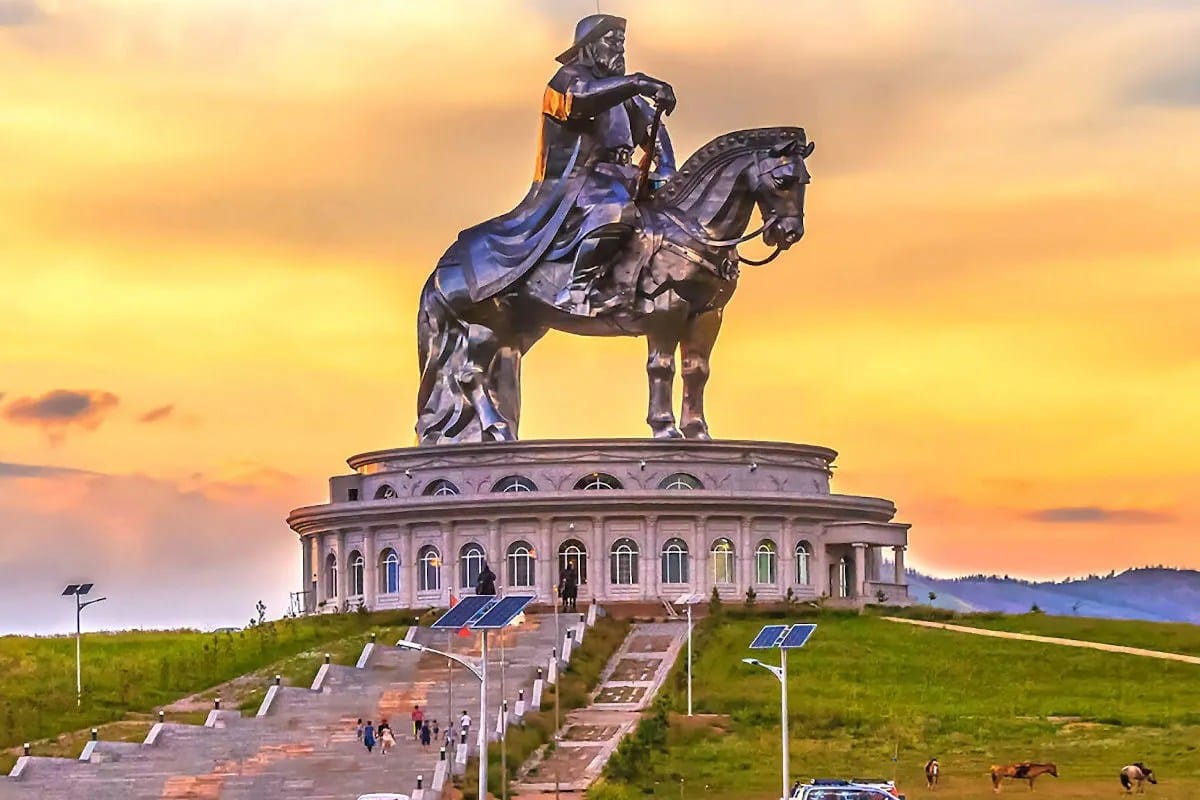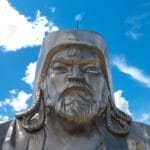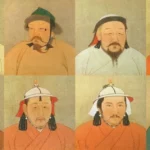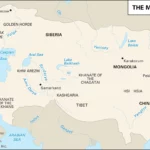The Ultimate Guide to Visiting the Genghis Khan Monument Complex
Planning a trip to Mongolia? Prepare to be amazed by the Genghis Khan Monument Complex, a must-see for any visitor. This colossal statue is more than just a breathtaking sight; it embodies the heart of Mongolian national pride. Let’s explore the captivating history, intricate design, and breathtaking views this Mongolian masterpiece offers.
Unveiling the History of the Genghis Khan Monument
Imagine standing at the feet of the world’s largest equestrian statue – the Genghis Khan Monument, a colossal tribute to the founder of the Mongol Empire. At a towering 130 feet, it’s not merely a statue; it’s a doorway into the life and times of one of history’s most influential figures.
A Journey Through Time
Beyond its impressive size, the Genghis Khan Monument Complex provides a fascinating look into Mongolian history and culture. Here’s how to make the most of your visit:
- Explore the Museum: Journey through the captivating story of the Mongol Empire – its ascent, global impact, and enduring legacy.
- Walk in Genghis Khan’s Footsteps: Discover the life of this legendary leader, from his humble beginnings to his rise as a powerful emperor.
- Experience Traditional Life: Step inside the authentic Mongolian yurts (called ‘gers’) dotting the complex to experience the traditional nomadic lifestyle firsthand.
A Legacy of Triumph and Tragedy
Genghis Khan’s legacy is a complex tapestry woven from threads of brilliance and brutality. Some historians view him as a strategic mastermind who united disparate tribes and fostered cultural exchange. Others remember the widespread destruction and loss of life that came with his conquests.
The monument encourages visitors to grapple with the intricate realities of history and consider the multifaceted nature of powerful figures like Genghis Khan. It’s a place to question, challenge assumptions, and form your own understanding of his world-altering impact.
Planning Your Visit
The Genghis Khan Monument Complex is conveniently located about 33 miles east of Ulaanbaatar, making it an easy day trip from Mongolia’s capital. Here are some tips:
- Photography: The time of day you visit matters. Early morning and late afternoon usually offer the most stunning light for capturing the statue’s grandeur.
- Visitor Amenities: Enjoy the on-site restaurant, offering delicious Mongolian cuisine, and a gift shop to find unique souvenirs.
Delving Deeper: Uncovering Hidden Layers
Don’t stop at just visiting the monument. Explore these thought-provoking aspects:
- Tourism and Identity: How has the monument influenced tourism in Mongolia, and how does it shape the nation’s cultural identity on a global stage?
- Design and Symbolism: Unravel the intricate design elements of the statue and surrounding complex, discovering the symbolism woven into every detail.
- Beyond Conquest: Genghis Khan’s legacy goes far beyond his military achievements. Research his legal code, the Yassa, his contributions to religious tolerance, and his part in facilitating trade along the Silk Road.
- The Genghis Khan Mausoleum: Did you know a mausoleum dedicated to Genghis Khan exists in Inner Mongolia, China? It’s believed to house symbolic relics and serves as a place of reverence for his descendants and admirers.
The Genghis Khan Monument invites travelers to embark on a captivating journey through history, culture, and the enduring legacy of a man who shaped an empire.
Why is the Genghis Khan Statue So Famous? (And What Makes It Unique)
The Genghis Khan statue is renowned worldwide. It’s not just about its size (though its sheer scale is awe-inspiring!). This statue embodies layers of historical, cultural, and architectural significance.
A Symbol of Mongolian Pride: For a nation that spent years under foreign rule, this statue is a powerful statement. It symbolizes Mongolia’s return to independence and its celebration of national heroes, with Genghis Khan as the ultimate symbol – the father of their nation.
Remembering the Past: The statue’s unveiling on the 800th anniversary of Genghis Khan’s empire is no coincidence. It’s a powerful reminder of Mongolia’s enduring history, reclaiming its narrative after years of suppression under Soviet rule.
A Global Attraction: The statue is a magnet for tourists worldwide, putting Mongolia on the map for travelers and boosting its economy while offering a platform to share its rich culture with the world.
More Than Just Metal: This isn’t just any statue. At over 130 feet tall, it dwarfs others. The design itself is intricate and skillfully crafted. Visitors can even ascend to an observation deck inside the horse’s head for breathtaking views!
This statue isn’t solely about honoring one man; it embodies the spirit of a nation rediscovering its voice and its rightful place on the world stage.
Unmasking the Patron: Who Funded the Genghis Khan Statue?
The funding for this monumental tribute to Mongolia’s most famous historical figure might surprise you. It wasn’t the Mongolian government but a surprising source: the people of Japan! Over 1,500 Japanese citizens and businesses donated to the project, covering the entire construction cost.
This act of generosity speaks volumes about the global fascination with Genghis Khan and the strong ties between Mongolia and Japan. It underscores the power of cultural exchange and understanding, transcending borders and historical complexities.
Consider this: a statue honoring the founder of the Mongol Empire, largely funded by people from a country the Mongols once attempted to invade! It’s a fascinating historical twist highlighting the power of reconciliation and shared admiration.
Each of the 2,000 granite slabs forming the statue’s base bears the name of a Japanese donor, forever etching their contribution into this impressive landmark.
The Genghis Khan statue was completed in 2008 to commemorate the 800th anniversary of the Mongol Empire’s founding. Today, it stands as a testament to international collaboration and a popular tourist destination, attracting visitors from all corners of the globe.
Genghis Khan’s Tomb: Will We Ever Unravel History’s Greatest Mystery?
Genghis Khan, the fierce leader who united the Mongols and carved out a vast empire, is a legend shrouded in mystery. The biggest enigma? The location of his tomb. It’s a question that has perplexed explorers and historians for centuries, making it one of history’s most enduring puzzles.
What makes this search so challenging? When Genghis Khan died in 1227 AD, the location of his burial was shrouded in secrecy. This was likely done to deter enemies and grave robbers. Add to that the vast, ever-changing landscape of the Mongolian steppe, and you have a historical needle in a haystack scenario.
Despite advances in technology, including satellite imagery and ground-penetrating radar, Genghis Khan’s final resting place remains elusive.
However, the search for the tomb faces complexities beyond the physical. For many Mongolians, Genghis Khan is a revered ancestor whose peace should not be disturbed. They believe that excavating his tomb would be disrespectful. There are also concerns about protecting the tomb and its potential treasures from damage or looting.
So, will we ever uncover this historical enigma? The mystery of Genghis Khan’s tomb continues to intrigue, drawing us in with the allure of uncovering a lost piece of history. Whether it will ever be found or remain one of history’s most captivating unsolved mysteries remains to be seen.
If you are interested in learning more about influential figures in history, be sure to check out this link about the amazing artist, Feodor Vassilyev. For the latest updates from historian Henry Margusity, visit his Twitter page.
- Senior at What Age: Benefits & Eligibility Guide - March 29, 2025
- Unlocking Senior Benefits: How Old is a Senior? Your Complete Guide - March 29, 2025
- Master Russian Politeness:A Guide to Saying Please - March 29, 2025

















1 thought on “The Ultimate Guide to Visiting the Genghis Khan Monument Complex”
Comments are closed.